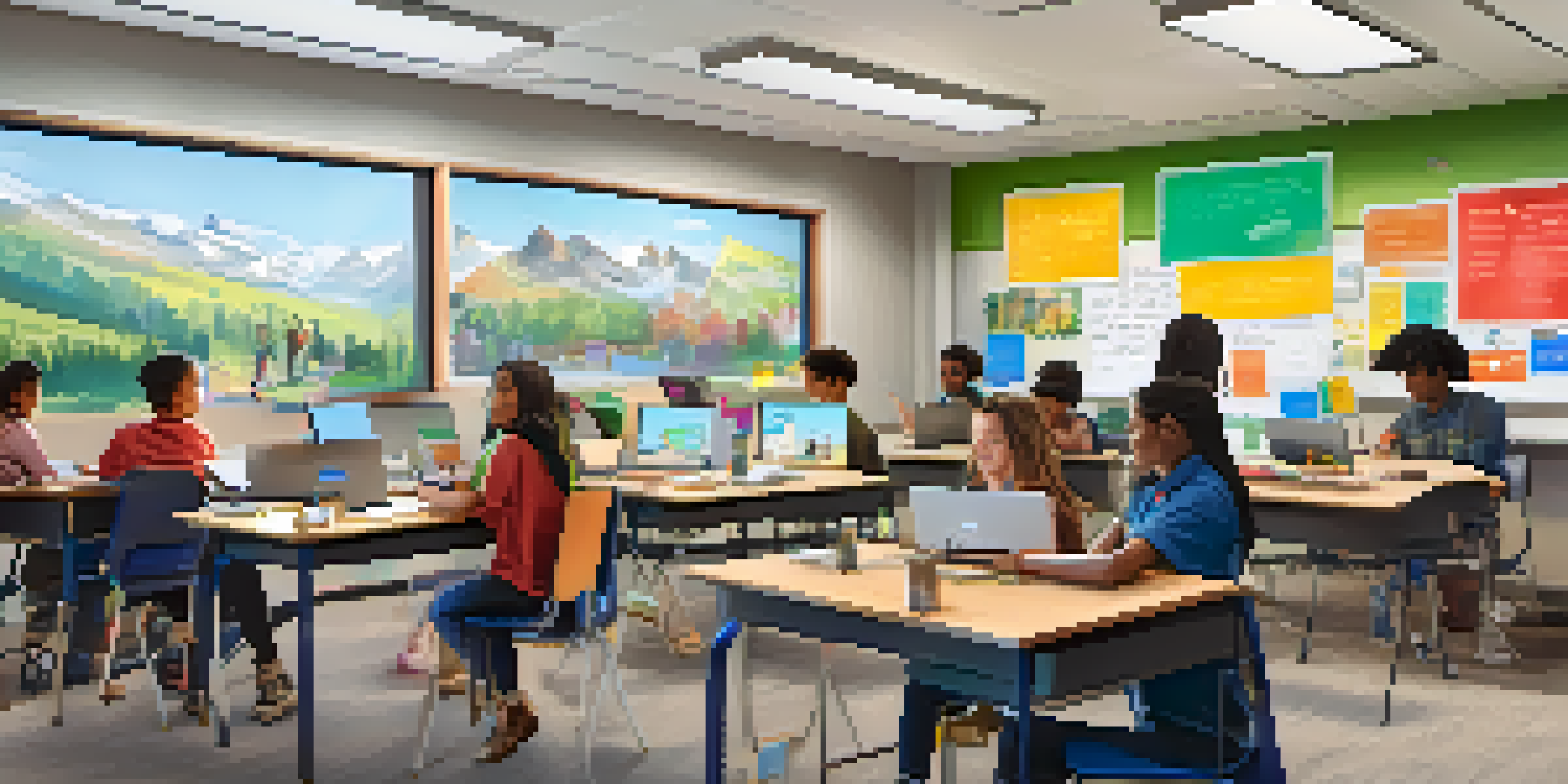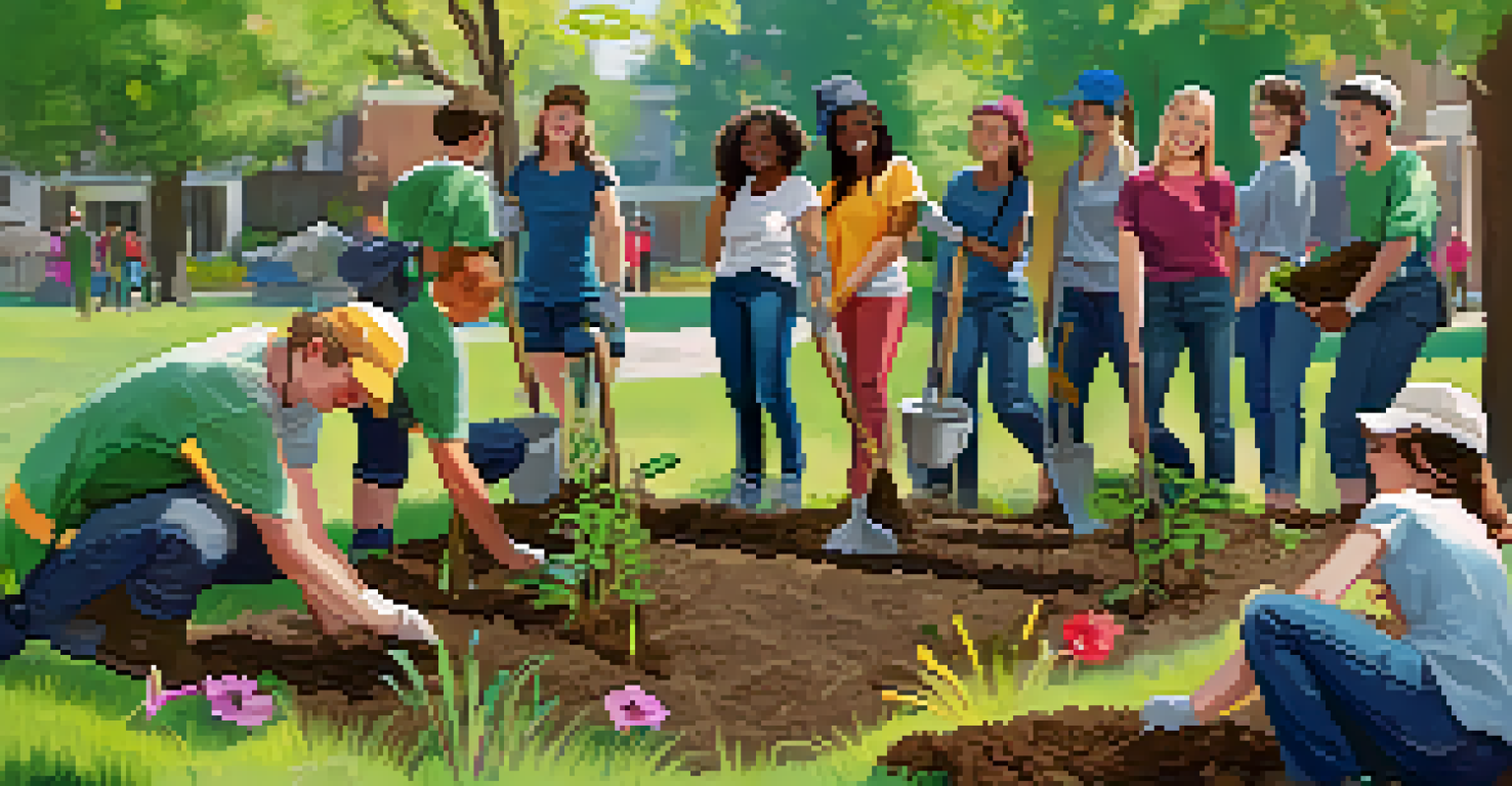Implementing Service Learning in Blended Learning Models

Understanding Blended Learning and Service Learning
Blended learning combines traditional face-to-face instruction with online learning. This approach can enhance flexibility and accessibility for students. Service learning, on the other hand, integrates community service with academic coursework, providing real-world context to classroom concepts.
Education is not the filling of a pail, but the lighting of a fire.
Both models focus on active learning, promoting engagement and deeper understanding. When combined, they create a dynamic educational experience that not only enriches students' knowledge but also fosters a sense of social responsibility.
This integration allows students to apply what they've learned in a meaningful way, strengthening their connection to both their studies and their communities.
Benefits of Combining Service Learning with Blended Learning
Combining service learning with blended learning offers numerous benefits for students. It cultivates critical thinking, enhances problem-solving skills, and encourages teamwork through community projects. Students can leverage technology to collaborate and reflect on their experiences, deepening their learning.

Additionally, this approach helps to bridge the gap between academic theory and practical application. For example, a business course might include a project where students partner with local nonprofits to develop marketing strategies, allowing them to apply their skills in real-world scenarios.
Blended and Service Learning Unite
Combining blended learning with service learning creates an engaging educational experience that enhances students' knowledge and social responsibility.
Ultimately, this combination equips students with the tools they need to be effective leaders and engaged citizens, ready to tackle societal challenges.
Key Principles for Effective Implementation
To successfully implement service learning in blended models, educators must establish clear objectives that align with curriculum standards. It's essential to choose community partners that complement the learning goals and provide meaningful opportunities for students to engage.
The best way to find yourself is to lose yourself in the service of others.
Moreover, integrating reflective practices into the learning process is crucial. Encouraging students to think critically about their experiences helps solidify their learning and connects theoretical knowledge with real-world application.
Lastly, maintaining open communication between educators, students, and community partners fosters collaboration and ensures that everyone is on the same page.
Choosing Appropriate Community Projects
Selecting the right community projects is vital for effective service learning. Projects should resonate with students' interests and academic goals, enhancing their motivation and engagement. For instance, a class studying environmental science might partner with local conservation efforts, combining learning with a passion for nature.
Additionally, projects should be manageable within the blended learning framework. They need to allow for both in-person and online components, such as virtual meetings or digital project presentations, ensuring flexibility and accessibility.
Technology Enhances Learning Impact
Utilizing technology in service learning allows for collaboration and creative expression, enriching the learning experience for students.
Ultimately, the chosen projects should provide students with meaningful opportunities to make a difference while applying their learning in practical ways.
Integrating Technology in Service Learning Experiences
Technology plays a pivotal role in enhancing service learning experiences within blended models. Online platforms can facilitate collaboration, allowing students to work together on projects regardless of their physical location. Tools like video conferencing and project management software can streamline communication and organization.
Moreover, technology enables students to document and reflect on their experiences in creative ways. For example, they might create blogs, videos, or digital portfolios showcasing their projects, which can also be shared with the community or presented in class.
By embracing technology, educators can expand the reach and impact of service learning, making it an integral part of the blended learning experience.
Assessing Learning Outcomes in Service Learning
Evaluating the effectiveness of service learning in blended models is essential for continuous improvement. Educators should develop clear assessment criteria that measure both academic and personal growth. This could include reflections, project outcomes, and peer evaluations, providing a comprehensive view of students' learning.
Incorporating self-assessment allows students to take ownership of their learning journey, encouraging them to reflect on their contributions and areas for growth. This reflective practice can enhance their critical thinking and self-awareness.
Effective Project Selection Matters
Choosing community projects that align with students' interests and academic goals boosts motivation and ensures meaningful engagement.
Additionally, feedback from community partners can offer valuable insights into the real-world impact of students' work, fostering a sense of accountability and connection to the community.
Challenges and Solutions in Implementation
While there are many benefits to integrating service learning into blended models, challenges can arise. Limited resources, time constraints, and varying levels of student engagement can hinder successful implementation. Educators must anticipate these challenges and plan accordingly.
One effective strategy is to start small, piloting projects and gradually expanding as students become more comfortable with the format. Providing ample support and guidance throughout the process can also help students navigate any difficulties they encounter.

Moreover, fostering a culture of collaboration and open communication among students, educators, and community partners can create a supportive environment that encourages problem-solving and innovation.